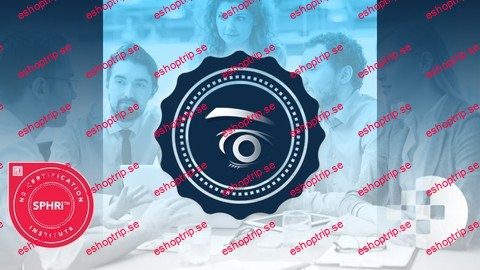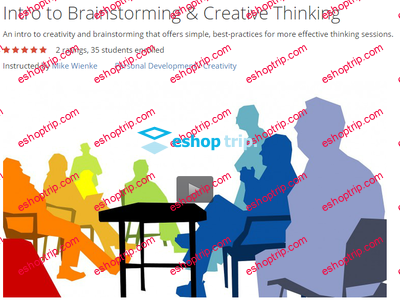Published 9/2024
MP4 | Video: h264, 1920×1080 | Audio: AAC, 44.1 KHz
Language: English | Size: 3.57 GB | Duration: 20h 0m
Master Global HR Strategies and Leadership for SPHRi Certification: Cross-Border Employment, Talent, and Compliance
What you’ll learn
Understanding the SPHRi certification process – Learn about the structure, benefits, and career advancement opportunities associated with SPHRi certification.
Key competencies for global HR professionals – Gain insight into the essential skills and competencies required for effective HR leadership in an international
Aligning HR strategy with organizational goals – Understand how to develop HR strategies that align with global business objectives and drive organizational suc
Strategic workforce planning in global contexts – Explore techniques for planning and managing a global workforce, ensuring alignment with business goals during
Navigating cross-border employment laws – Learn about international labor laws, agreements, and compliance strategies for managing legal risks across multiple j
Understanding international labor standards – Get familiar with core labor rights, enforcement mechanisms, and the global application of labor standards to ensu
Developing effective global talent acquisition strategies – Discover methods for recruiting and selecting candidates for international roles, and leveraging tec
Managing global talent development and retention – Learn to design and implement global talent development programs, ensuring retention and succession planning
Expatriate management and global mobility policies – Understand how to design expatriate assignments, support expatriates and their families, and manage legal a
Cultural competence in HR practices – Gain insights into managing multicultural teams, cross-cultural communication, and promoting diversity, equity, and inclus
Strategic global compensation and benefits packages – Learn to design compensation and benefits strategies that are both globally consistent and locally relevan
Global HR compliance frameworks – Understand the complexities of global HR compliance, including privacy, data protection, anti-corruption laws, and managing in
Leveraging technology for global HR operations – Learn how to implement and utilize HR Information Systems (HRIS) to streamline global HR processes and enhance
Global workforce safety and wellbeing – Explore global safety regulations, crisis management, and the development of international occupational health and safet
Emerging trends and future challenges in global HR – Understand how AI, technology, and global economic and political changes are impacting the future of work a
Data-driven decision-making in global HR strategy – Learn how to use analytics to inform strategic decisions related to workforce planning and optimization on a
Requirements
No Prerequisites.
Description
The SPHRi certification is designed for seasoned HR professionals seeking to enhance their strategic leadership skills and global HR expertise. This course provides comprehensive coverage of the core competencies required for HR professionals to thrive in an international context. It is tailored to professionals aiming to elevate their knowledge of cross-border employment laws, international labor standards, global talent acquisition, and HR strategies in diverse cultural settings. While the focus is primarily theoretical, it offers students a deep understanding of the complexities and nuances of global human resources management. Through a structured learning path, students will gain the knowledge necessary to succeed in the SPHRi certification exam and apply these insights to real-world HR challenges.At the heart of this course is the alignment of HR strategies with broader organizational goals. Strategic workforce planning, global HR initiatives, and business continuity are essential components covered to prepare students to manage human resources on a global scale. Students will learn how to develop and execute HR initiatives that align with organizational priorities, ensuring that workforce planning not only supports growth but also mitigates risks in diverse international environments. The course delves into how HR professionals can leverage strategic planning to create a coherent and effective HR strategy that aligns with business continuity and the long-term success of multinational organizations.The course also explores the intricate web of cross-border employment laws and regulations, which is essential for HR professionals working in a global context. Students will learn about international labor agreements, legal risks associated with managing a global workforce, and how to navigate employment contracts across multiple jurisdictions. The course will also provide a thorough examination of cross-cultural legal considerations, emphasizing the importance of cultural sensitivity and legal compliance in a diverse workforce. This knowledge will empower HR leaders to ensure that their organizations operate within the bounds of local laws while maintaining global consistency in their HR practices.A key focus of the course is global talent acquisition and management. Recruitment strategies for international roles, employer branding, and the selection process for cross-border employees are thoroughly explored. The course emphasizes the strategic use of technology in global recruitment, ensuring that HR professionals are equipped with the tools necessary to navigate the increasingly digital landscape of international HR. Furthermore, students will gain insights into developing a global employee value proposition that resonates across different cultural contexts, which is crucial for retaining top talent in competitive global markets.The course also covers expatriate management, an essential area of global HR. Students will learn how to design effective expatriate assignments, manage global mobility policies, and support expatriates and their families throughout their international assignments. Additionally, the course addresses the often-overlooked aspect of repatriation, offering best practices for reintegrating expatriates into their home countries after completing international assignments. This section provides a detailed understanding of the legal and tax considerations unique to expatriates, which is vital for ensuring compliance and a smooth transition for employees and organizations alike.In the final sections, the course shifts focus to the importance of cultural competency in HR practices. Understanding and managing cultural differences is key to leading multinational teams effectively. The course will guide students in developing cultural competence, managing multicultural teams, and promoting diversity, equity, and inclusion across global organizations. Students will gain the skills needed to foster cross-cultural communication and inclusivity, ensuring that HR leaders can create a harmonious and productive work environment in any cultural context.Overall, this course provides students with a robust theoretical foundation in global human resource management. While practical applications may vary by organization, the course equips HR professionals with the strategic knowledge and insights needed to lead global HR initiatives, navigate complex international labor landscapes, and develop workforce strategies that align with business objectives in today’s global economy. Through this comprehensive learning experience, students will be well-prepared to succeed in the SPHRi certification exam and advance their careers in global HR leadership.
Overview
Section 1: Course Resources and Downloads
Lecture 1 Course Resources and Downloads
Section 2: Introduction to SPHRi Certification
Lecture 2 Section Introduction
Lecture 3 Overview of SPHRi Certification
Lecture 4 Case Study: SPHRi Certification
Lecture 5 Key Competencies for Global HR Professionals
Lecture 6 Case Study: Global HR Mastery
Lecture 7 Understanding the Exam Structure
Lecture 8 Case Study: Strategic Preparation for SPHRi Certification
Lecture 9 Certification Benefits and Career Advancement
Lecture 10 Case Study: Maria Lopez’s Path to Career Growth
Lecture 11 Preparing for the SPHRi Exam
Lecture 12 Case Study: Strategic Preparation for SPHRi Certification
Lecture 13 Section Summary
Section 3: Global HR Strategy
Lecture 14 Section Introduction
Lecture 15 Aligning HR Strategy with Organizational Goals
Lecture 16 Case Study: Strategic HR Alignment
Lecture 17 Strategic Workforce Planning in Global Contexts
Lecture 18 Case Study: Global Expansion and Workforce Alignment
Lecture 19 Developing Global HR Initiatives
Lecture 20 Case Study: Global HR Strategies
Lecture 21 HR’s Role in Business Continuity and Risk Management
Lecture 22 Case Study: HR’s Strategic Role
Lecture 23 Leadership and Strategy in International HR
Lecture 24 Case Study: Global HR Leadership
Lecture 25 Section Summary
Section 4: Cross-Border Employment Laws
Lecture 26 Section Introduction
Lecture 27 Introduction to Cross-Border Employment Regulations
Lecture 28 Case Study: Managing Cross-Border Employment
Lecture 29 International Labor Laws and Agreements
Lecture 30 Case Study: Navigating International Labor Laws
Lecture 31 Managing Legal Risks in Global HR
Lecture 32 Case Study: Navigating Global HR Legal Challenges
Lecture 33 Navigating Employment Contracts Across Jurisdictions
Lecture 34 Case Study: Strategic Management of Employment Contracts
Lecture 35 Cross-Cultural Legal Considerations
Lecture 36 Case Study: Managing GlobalTech’s Workforce
Lecture 37 Section Summary
Section 5: International Labor Standards
Lecture 38 Section Introduction
Lecture 39 Overview of International Labor Standards
Lecture 40 Case Study: Ensuring Fair Labor Practices
Lecture 41 Core Labor Rights and Their Global Application
Lecture 42 Case Study: Ensuring Core Labor Rights
Lecture 43 Enforcement Mechanisms for Labor Standards
Lecture 44 Case Study: Enhancing Labor Standards in Bangladesh
Lecture 45 Human Rights in Global Employment Practices
Lecture 46 Case Study: Corporate Accountability and Labor Rights
Lecture 47 Monitoring and Reporting Compliance
Lecture 48 Case Study: Enhancing Compliance
Lecture 49 Section Summary
Section 6: Global Talent Acquisition
Lecture 50 Section Introduction
Lecture 51 Recruitment Strategies for International Roles
Lecture 52 Case Study: TechNova’s Comprehensive Global Recruitment Strategy
Lecture 53 Employer Branding in Global Markets
Lecture 54 Case Study: Global Employer Branding
Lecture 55 Selection Processes for Cross-Border Employees
Lecture 56 Case Study: Strategic Talent Acquisition for Global Success
Lecture 57 Leveraging Technology in Global Recruitment
Lecture 58 Case Study: GlobalTech Solutions
Lecture 59 Developing a Global Employee Value Proposition
Lecture 60 Case Study: Crafting a Global EVP
Lecture 61 Section Summary
Section 7: Talent Management in Global Organizations
Lecture 62 Section Introduction
Lecture 63 Designing Global Talent Development Programs
Lecture 64 Case Study: Strategic Global Talent Development
Lecture 65 Managing International Performance and Retention
Lecture 66 Case Study: Strategies for Effective International Talent Management
Lecture 67 Career Pathing for a Global Workforce
Lecture 68 Case Study: Global Career Pathing
Lecture 69 Succession Planning Across Borders
Lecture 70 Case Study: Navigating Global Leadership Transitions
Lecture 71 Leadership Development for Multinational Teams
Lecture 72 Case Study: Leadership and Cultural Intelligence
Lecture 73 Section Summary
Section 8: Expatriate Management
Lecture 74 Section Introduction
Lecture 75 Designing Expatriate Assignments
Lecture 76 Case Study: Strategic Design and Success Factors of Expatriate Assignments
Lecture 77 Global Mobility Policies and Procedures
Lecture 78 Case Study: Efficient Global Mobility Strategies
Lecture 79 Supporting Expatriates and Their Families
Lecture 80 Case Study: Holistic Expatriate Management
Lecture 81 Repatriation Strategies and Best Practices
Lecture 82 Case Study: Enhancing Repatriation
Lecture 83 Legal and Tax Considerations for Expatriates
Lecture 84 Case Study: Navigating International Assignments
Lecture 85 Section Summary
Section 9: Cultural Competency in HR
Lecture 86 Section Introduction
Lecture 87 Understanding Cultural Differences in HR Practices
Lecture 88 Case Study: Cultural Adaptation Strategies for Effective International HR
Lecture 89 Managing Multicultural Teams
Lecture 90 Case Study: Leveraging Multicultural Teams
Lecture 91 Developing Cultural Competence for HR Leaders
Lecture 92 Case Study: Cultural Competence in HR
Lecture 93 Promoting Diversity, Equity, and Inclusion Globally
Lecture 94 Case Study: GlobalTech’s Global DEI Initiative
Lecture 95 Cross-Cultural Communication in HR
Lecture 96 Case Study: Enhancing Cross-Cultural Communication in HR
Lecture 97 Section Summary
Section 10: Total Rewards in Global Contexts
Lecture 98 Section Introduction
Lecture 99 Designing Compensation Packages for International Employees
Lecture 100 Case Study: Global Compensation Strategies
Lecture 101 International Benefits and Perks Strategies
Lecture 102 Case Study: Global Benefits Strategies
Lecture 103 Equity Compensation in Multinational Companies
Lecture 104 Case Study: Designing a Global Equity Compensation Plan
Lecture 105 Incentive Programs for Global Talent
Lecture 106 Case Study: Strategic Incentive Programs for Global Talent Management
Lecture 107 Recognition Programs Across Cultures
Lecture 108 Case Study: Culturally Attuned Recognition Strategies
Lecture 109 Section Summary
Section 11: International HR Compliance and Ethics
Lecture 110 Section Introduction
Lecture 111 Global HR Compliance Frameworks
Lecture 112 Case Study: GlobalTech’s Strategic Approach to Navigating Global HR
Lecture 113 Ethical Practices in International HR
Lecture 114 Case Study: Implementing Ethical HR Practices in Multinational Corporations
Lecture 115 Managing International Audits and Investigations
Lecture 116 Case Study: GlobalTech’s HR Strategy
Lecture 117 Compliance with Anti-Corruption Laws
Lecture 118 Case Study: GlobalTech Inc.’s Strategic Response to Anti-Corruption Allegations
Lecture 119 Privacy and Data Protection in Global HR
Lecture 120 Section Summary
Section 12: Global Workforce Planning
Lecture 121 Section Introduction
Lecture 122 Forecasting Global Talent Needs
Lecture 123 Case Study: Strategic Workforce Planning for Global Expansion
Lecture 124 Managing Workforce Expansion and Reduction
Lecture 125 Case Study: Strategic Workforce Management
Lecture 126 Workforce Planning During Mergers and Acquisitions
Lecture 127 Case Study: Optimizing Human Capital Integration
Lecture 128 Aligning Workforce Plans with Business Strategy
Lecture 129 Case Study: Strategic Workforce Planning
Lecture 130 Data-Driven Decision Making in Global Workforce Planning
Lecture 131 Case Study: Leveraging Data-Driven Decision Making
Lecture 132 Section Summary
Section 13: Performance Management in International Contexts
Lecture 133 Section Introduction
Lecture 134 Creating Global Performance Metrics
Lecture 135 Case Study: Creating Global Performance Metrics
Lecture 136 Aligning Performance with Organizational Goals
Lecture 137 Case Study: Aligning Global Employee Performance with Strategic Goals
Lecture 138 Providing Feedback Across Cultures
Lecture 139 Case Study: Navigating Cross-Cultural Feedback
Lecture 140 Managing Performance Improvement Plans
Lecture 141 Case Study: Effective PIP Management
Lecture 142 Global Approaches to Employee Evaluations
Lecture 143 Case Study: Harmonizing Global Employee Evaluations
Lecture 144 Section Summary
Section 14: HR Information Systems and Technology
Lecture 145 Section Introduction
Lecture 146 Implementing Global HR Information Systems (HRIS)
Lecture 147 Case Study: Global HRIS Implementation at Tech Global Inc.
Lecture 148 Leveraging Technology for International HR Operations
Lecture 149 Case Study: GlobalTech Solutions
Lecture 150 Digital Transformation in Global HR
Lecture 151 Case Study: Transforming Global HR
Lecture 152 Managing HR Data Privacy and Security
Lecture 153 Case Study: Enhancing HR Data Security and Privacy at TechNova
Lecture 154 Utilizing Analytics in Global HR Strategy
Lecture 155 Case Study: Optimizing Global Workforce Management
Lecture 156 Section Summary
Section 15: Employee Safety and Wellbeing Globally
Lecture 157 Section Introduction
Lecture 158 Global Safety Regulations and Standards
Lecture 159 Case Study: Enhancing Global Workplace Safety
Lecture 160 Promoting Employee Wellbeing Internationally
Lecture 161 Case Study: Enhancing Employee Wellbeing
Lecture 162 Crisis Management and Business Continuity Planning
Lecture 163 Case Study: Crisis Management and Business Continuity
Lecture 164 Occupational Health and Safety Across Borders
Lecture 165 Case Study: Global Strategies for Navigating OHS Challenges
Lecture 166 Developing Global Safety Programs
Lecture 167 Case Study: Implementing Global Safety Programs
Lecture 168 Section Summary
Section 16: Global HR Trends and Future Challenges
Lecture 169 Section Introduction
Lecture 170 Emerging Trends in Global HR Management
Lecture 171 Case Study: Transforming Global HR
Lecture 172 The Impact of AI and Technology on International HR
Lecture 173 Case Study: Transforming Global HR
Lecture 174 Adapting to Global Economic and Political Changes
Lecture 175 Case Study: Navigating Global Transformations
Lecture 176 The Future of Work: Remote and Distributed Teams
Lecture 177 Case Study: TechNova’s Remote Work Revolution
Lecture 178 Sustainable HR Practices in a Global Context
Lecture 179 Case Study: Technogreen’s Sustainable HR Transformation
Lecture 180 Section Summary
Section 17: Course Summary
Lecture 181 Conclusion
HR professionals seeking global certification – Individuals looking to achieve the SPHRi certification and elevate their career in international human resources management.,Experienced HR leaders – Seasoned HR professionals who want to expand their expertise in cross-border employment laws, global HR strategies, and managing international teams.,Aspiring global HR managers – HR practitioners who are aiming to take on leadership roles in multinational organizations and develop skills in managing global talent and compliance.,Expatriate and global mobility specialists – Professionals involved in expatriate assignments, global mobility policies, and supporting international workforce transitions.,Corporate leaders expanding into international markets – Executives and managers involved in workforce planning, talent acquisition, and HR strategy development for global business expansion.,Diversity, equity, and inclusion advocates – HR professionals interested in promoting cultural competence, managing multicultural teams, and fostering inclusive work environments on a global scale.,HR consultants and advisors – Specialists offering guidance to multinational companies on global HR compliance, labor standards, and best practices in international workforce management.
Homepage










